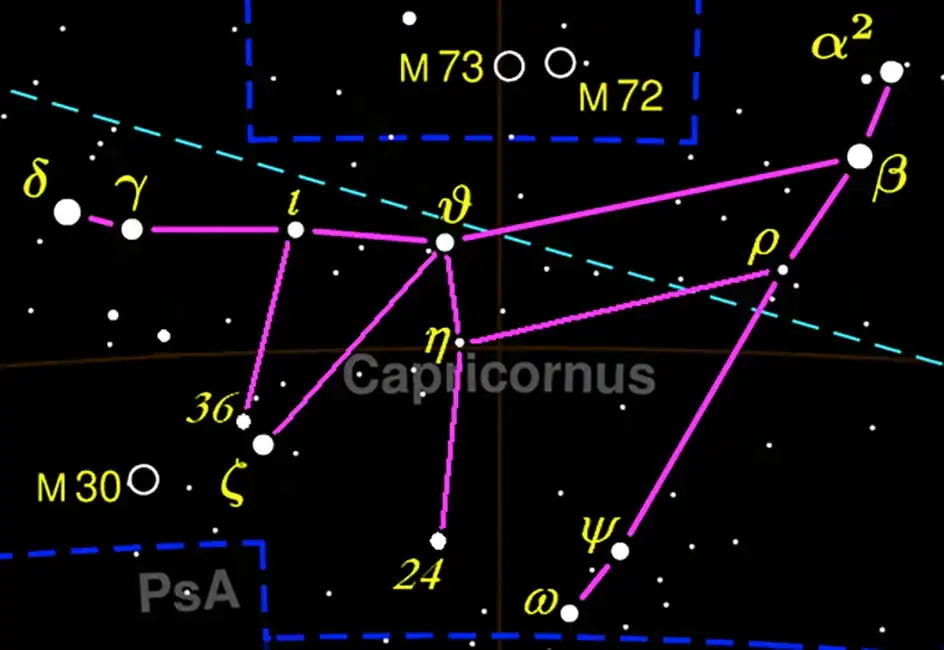
Capricornus, often referred to as Capricorn, is one of the twelve constellations of the zodiac. It is located in the southern sky and represents a mythological creature known as a sea-goat, a creature with the front half of a goat and the tail of a fish. Capricornus is a relatively faint constellation and can be challenging to observe, but it holds significant historical and mythological importance.
Key Features
Capricornus is the smallest of the zodiac constellations, covering an area of 414 square degrees in the sky. Its shape is often described as a triangular or arrowhead-like figure, though it is supposed to represent the mythical sea-goat. The constellation is bordered by Aquarius, Sagittarius, and Microscopium, among others. Due to its faint stars, it can be difficult to spot without a clear and dark sky.
Mythology
In Greek mythology, Capricornus is associated with the god Pan, who transformed into a sea-goat to escape the monster Typhon. According to the myth, Pan leaped into the Nile River, with the lower half of his body turning into a fish while his upper half remained a goat. This transformation was immortalized in the stars as the constellation Capricornus. The constellation is also linked to the Babylonian god Ea, who was depicted as a creature with the head and upper body of a goat and the tail of a fish.
Notable Stars
- Delta Capricorni (Deneb Algedi): The brightest star in Capricornus, Deneb Algedi, is a binary star system located about 39 light-years away from Earth. It has a magnitude of 2.85, making it the easiest star to spot in the constellation.
- Beta Capricorni (Dabih): This is a complex multiple star system composed of at least five stars. The primary component, Beta-1 Capricorni, is a yellow giant star. Dabih has a combined apparent magnitude of around 3.05.
- Alpha Capricorni (Algedi): Another multiple star system, Algedi consists of two star systems, Alpha-1 Capricorni and Alpha-2 Capricorni, which are not physically related but appear close to each other in the sky.
Visibility
Capricornus is best visible during late summer and early autumn in the Northern Hemisphere, particularly around September. It is a southern constellation, so it appears lower in the sky for observers in mid to high northern latitudes. Observers in the Southern Hemisphere can see Capricornus high in the sky during the same period.
Tips for Observing
- Find a Dark Sky: Due to its faintness, observing Capricornus requires a location far from city lights. A dark, clear sky will significantly improve your chances of spotting the constellation.
- Use Binoculars or a Telescope: While some stars in Capricornus are visible to the naked eye, binoculars or a small telescope can help you distinguish its key stars more clearly.
- Look for the Triangle Shape: Start by locating the brighter stars Deneb Algedi and Dabih, which form part of the triangle shape that characterizes Capricornus.
- Timing: The best time to observe Capricornus is during late summer to early autumn when it is highest in the sky during evening hours.
